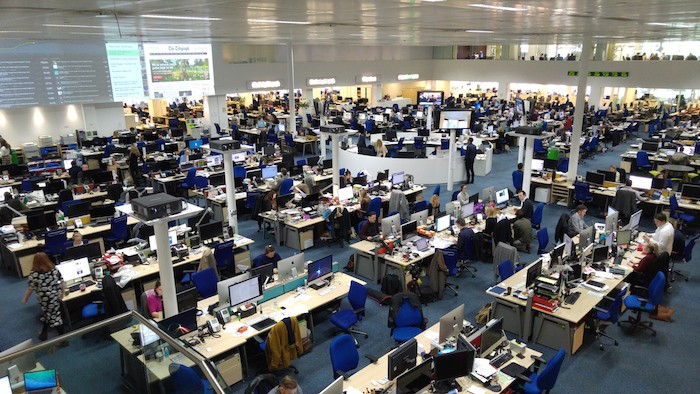
Starting Wednesday, about 95 percent of content the British newspaper The Telegraph publishes online will flow through a new content management system — one that it developed in-house through a collaboration between its product team and the newsroom, aimed at simplifying its digital publishing process.
“Our old content management system is about 10 years old now, and it’s incredibly feature rich,” said Malcolm Coles, The Telegraph’s director of digital media, who helped lead the process that resulted in the new CMS. “It was feature rich with stuff we didn’t really need anymore and didn’t have lots of ones we might want. It generally slowed down the act of doing journalism — thinking how to present information and getting it live.”
Under the paper’s old system, for example, it took an average of 27 minutes to publish a wire crime report with photos and an embedded graphic. Producers had to go through 58 steps — including seven repeating steps — to get the story online.
With the new CMS, called Telegraph Authoring, the same story with images and a graphic can be published in four minutes and just 12 steps, including two repeated processes.
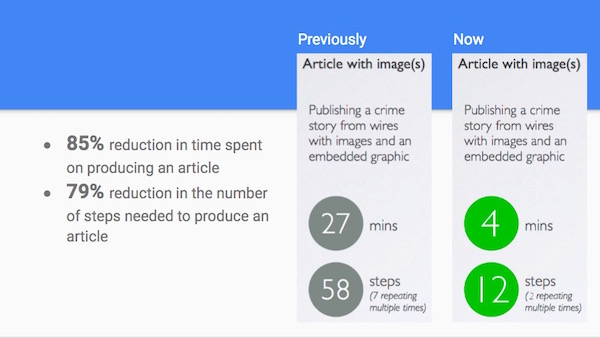
“We know that people were spending a very long time after they had written the article doing the post-production process,” said Alex Watson, The Telegraph’s head of product. “We wanted to focus on making it fast from writing a piece to publishing it.”
Telegraph Authoring is built on top of Adobe Experience Manager , and it makes it simpler for staffers to input information, and also enables them to create different story formats. The Telegraph previously used Escenic, an off-the-shelf CMS.
“Rather than just adding lots and lots of options, it’s quite constrained in many ways,” Watson said. “It sets people down this very logical path. Rather than presenting all of the options all at once, it goes through these steps. It makes you go through these steps so you know what’s coming up next.”
For The Telegraph, simplicity was the key. Watson said it’s ironic that journalists flock to simple platforms such as Twitter or Medium while their employers’ CMSes are often a confusing mess.
“You do want to be able to very directly connect the journalist and the reader, and the CMS is a system that can get in the way of that,” Watson said.”
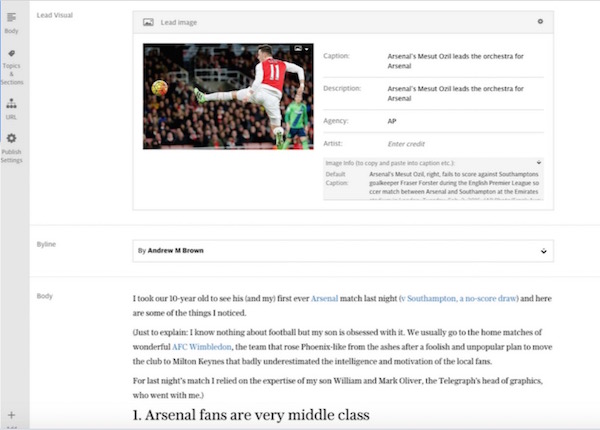
Before making the switch over, The Telegraph used five different versions of its online publishing systems, as it tried to over-optimize for the needs of different desks. When the fashion section began using its own CMS, it never thought that it would want to use live blogs — but the advent of live coverage of various global Fashion Weeks and award-show red carpets meant that they had to produce their live blogs in an entirely different system and link to it, which Watson said made “the user experience really crummy.”
“The fact that everything’s available consistently to all the desks gives us more freedom to think about what do readers want to read about and what is the easiest way for us to cover it,” he said.
Development began in January 2015 when they convinced the paper’s brass that it was worth investing resources on an internal-facing tool as part of a larger redesign it was undertaking. Watson and Coles assembled a team of developers, designers, product managers, and digital journalists to work on the project.
Watson said the team didn’t want to go to the newsroom and ask them to list all the things they hated about the system they were using at the time. Instead, they mapped out how journalists were using the current system and understanding what their day-to-day workflows were like, going through every step of the publishing process.
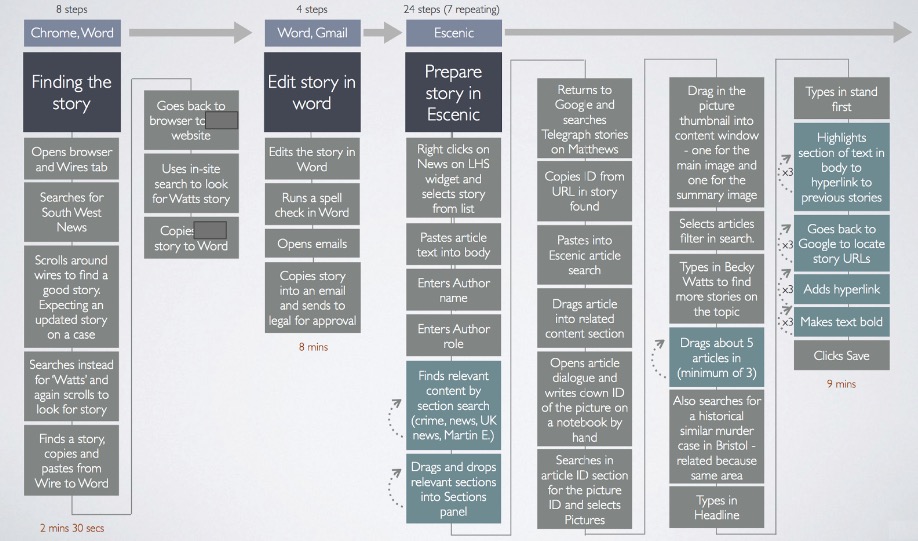
The developers collected data on how long each step took, and mapped out every part of the publishing process — from writing, to adding images and graphics, to actually posting a story. Their goal was to find the fastest way reporters could go from writing a story to having it ready for publication.
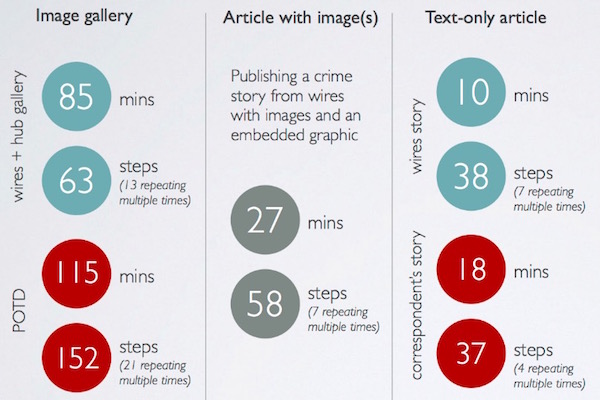
They realized that some steps that sounded simple — such as resizing photos and placing them in the body of the story — were in reality nightmares to complete.
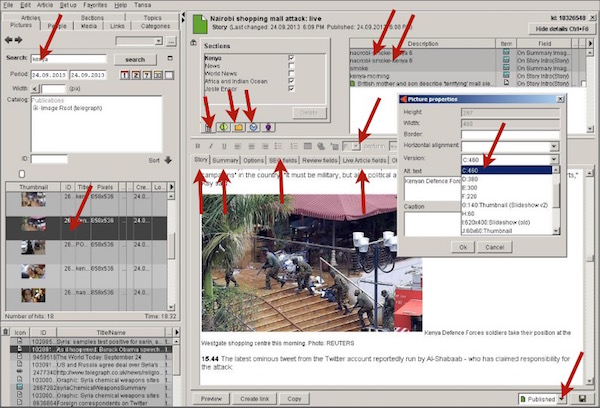
“You would find that the teams break their concentration and break their flow,” Watson said. “They’d do a little bit of text work in the CMS and they’d tap into Photoshop. Their computers are slow; Photoshop is a very intense application. That’s not good for them. We wanted to bake into the system a quick way to do cropping and manage that image workflow. It’s very task based.’
In addition to the main team working on designing the authoring tools, there was a group of eight or so journalists from across the newsroom who met with the development team regularly and got early access to test out the tools. They’d be asked to complete specific tasks, and the developers would then observe and collect data on how they went about doing it. There were also a handful of sessions where anyone in the newsroom could test out the tools and provide feedback.
In all, about one-third of The Telegraph’s newsroom, about 140 staffers, tested out the new authoring tool prior to its launch. And in the end, The Telegraph thinks its built a system that will have maximum benefit for the most number of people in the newsroom, regardless of each section’s different needs.
“Individual desks have different ways of working, but if you end up trying to support all those ways of working, you end up with a right mess of a content management system again with lots of options that you don’t use and get in the way,” Coles said.
The paper began switching individual desks over to the new system last October. It began with the fashion, food and drink, gardening, and other features desks that didn’t publish at the same frequency as the news or sports desks.

The gradual rollout helped the developers work out kinks in the system while also adding in new features based on how staffers were actually using the tool. Throughout the process, the developers tweaked things such as making the differences between input fields clearer.
“Going desk by desk did allow us to concentrate on important things,” Coles said.
The Telegraph’s news desk is gaining access to the new system today; it’s the last major desk to begin using the tool. The only ones remaining to switch over are the film section, which is still using its own bespoke CMS for the time being, and a luxury section which publishes infrequently because it’s tied to an occasional print supplement.
Now that virtually everyone is one the same system, it’ll be easier for journalists to find previous coverage from a different desk, link to related stories, and reuse photos or other information.
Though the new system is widely used in the newsroom now, the developers plan to keep working on it. Watson said their goal is to update the CMS weekly with three or four new features and fixes — both big and small.
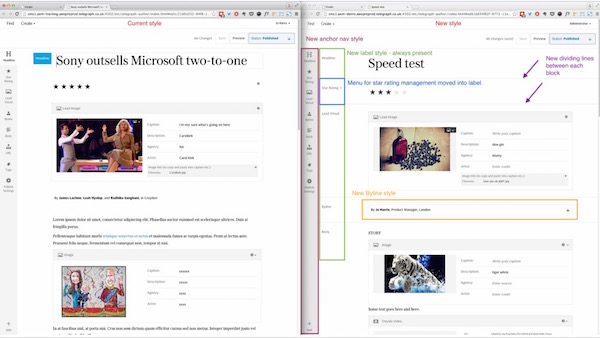
For example, the CMS had a save and a publish button. Hitting publish automatically saves the story, but the product team realized that reporters were hitting save before publishing anyway. As a result, the developers made that distinction clearer.
The new authoring tool is also responsive for mobile devices, and the development team is looking at ways to test and improve the mobile process so reporters will be able to file stories from the field on their phones. Currently though, the CMS only works on The Telegraph’s network, so reporters outside the newsroom either need to use a VPN or send their stories to editors in the newsroom.
They’re also focused on improving live coverage and also making The Telegraph’s archives more accessible through the tool.
“At the moment, what the system has done is focused on efficiency by removing steps,” Watson said. “The next phase really for this year is efficiency by adding contextual support. You don’t really want it to be like Clippy: Hey, it looks like you’re writing a music review! But you might want it to go: Here are some suggested articles you could link it to.”The product team sits on a different floor than the newsroom, but members of the team now plan to spend a couple days each week sitting in the newsroom so they’ll be able to receive feedback and observe how staffers use of the system evolves.
“There’s nothing original here,” Watson said. “It’s about spending more time in the newsroom collaborating.”